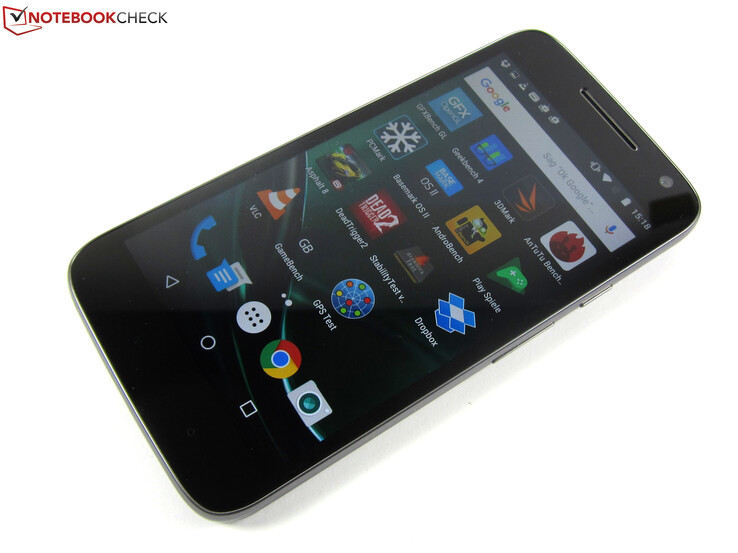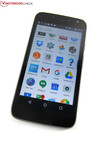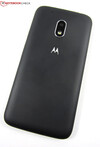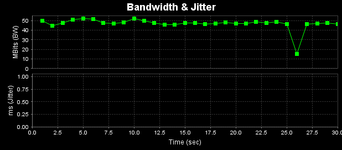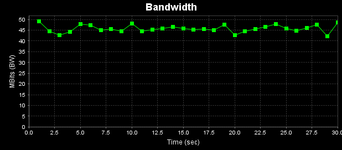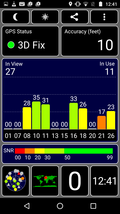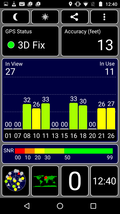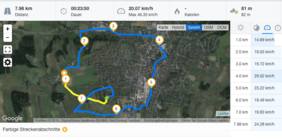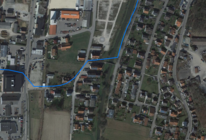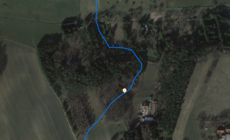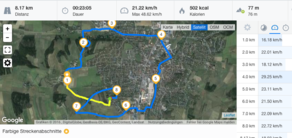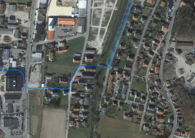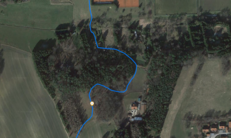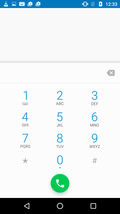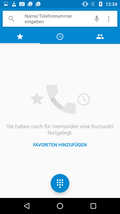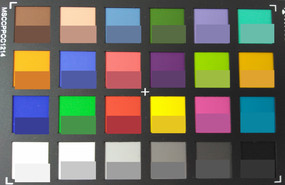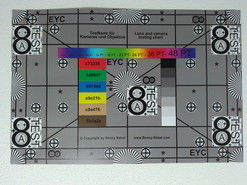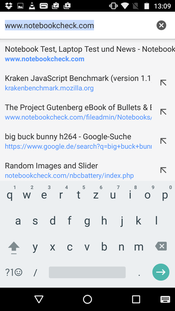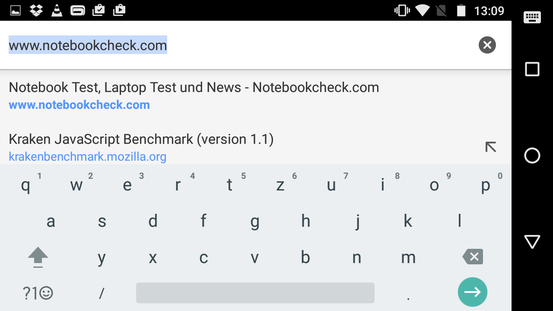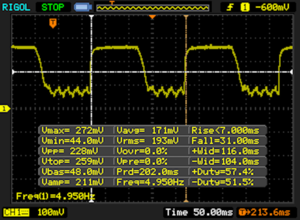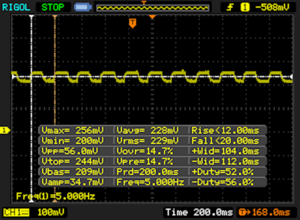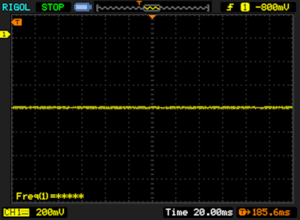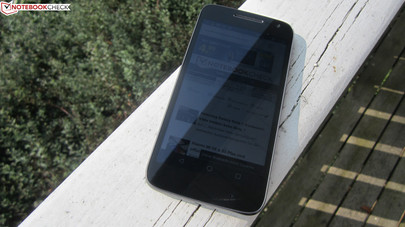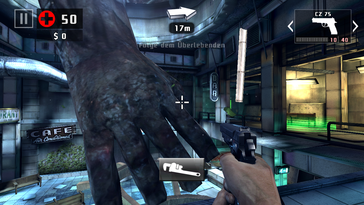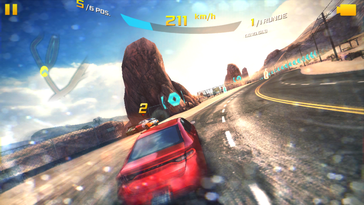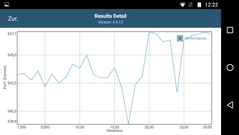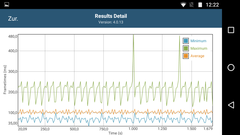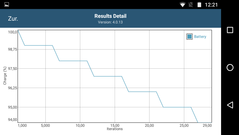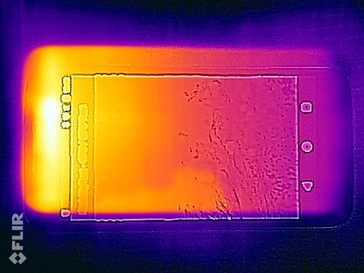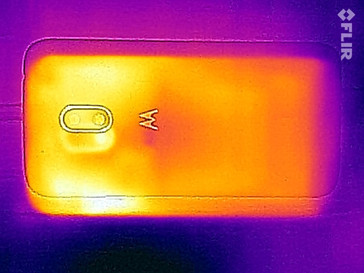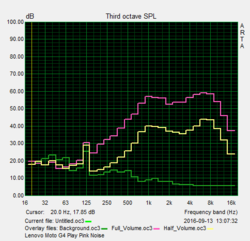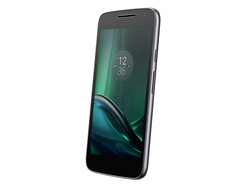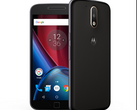Lenovo Moto G4 Play Smartphone Review

For the original German review, see here.
Lenovo is expanding the Moto G family: the Moto G4 Play is the newest addition following the Moto G4 and the Moto G4 Plus. This model has an interesting price of 159 Euros (~$174) and comes with a lot of features: a quad-core processor, 16 GB storage, the latest Android 6.0 Marshmallow, an HD display, 5 and 8 MP cameras and a wireless module with LTE Cat.4 support.
In contrast to the more expensive, yet faster and better-equipped Moto G4 and Moto G4 Plus, the test model is similar in hardware to the Moto G of the 3rd generation. This model scored highly in some of our tests and its successor, the Moto G4 Play, must match the third-generation model and the new, updated competition, which includes devices such as the Asus ZenFone Max ZC550KL, HTC One A9, Samsung Galaxy J5 2016 and Sony Xperia XA.
Case
Lenovo has put a sturdy synthetic case on the Moto G4 Play. The case has rounded corners and edges and the gaps between the materials are very small. The chassis is available in black or white and has a rough back, which makes it easy to hold. If you remove the back cover, you will find a 2,800 mAh battery, a MicroSD slot and two Micro-SIM slots. Unlike the Moto G of the 3rd generation, the Moto G4 Play is not safe in fresh water, but its nano-protective layer can repel some water.
Connectivity
The Moto G4 Play uses a middle-class SoC, the Qualcomm Snapdragon 410 APQ8016, and it provides 2 GB RAM and 16 GB storage for use. The user will be able to access 10.4 GB out of the box. The storage can be expanded further using the MicroSD slot (by an additional 128 GB). The MicroSD card can be formatted as internal storage or portable storage. It is also possible to move apps to the MicroSD card. External storage can be connected via USB-OTG. Chromecast is available to transmit display content to an external monitor or TV. This feature will require a suitable Chromecast stick to work. The removable rear cover hides a MicroSD slot and two Micro-SIM slots.
| SD Card Reader | |
| maximum SDCardreader Maximum Transfer Rate | |
| average SDCardreader Average Transfer Rate |
Software
Lenovo has left the preinstalled Android 6.0 Marshmallow version almost untouched. The manufacturer has also kept its own apps to a minimum. In fact, the only Lenovo apps on the phone are the help app and the Moto App. The latter can be used to perform functions such as regulating notifications. Furthermore, the Moto App can allow the user to activate swipe gestures, which would help when using the phone with one hand.
Communication and GPS
The Moto G4 Play can communicate over the quad-band GSM (850, 900, 1,800, 1,900 MHz), quad-band UMTS (850, 900, 1,900, 2,100 MHz) and LTE Cat. 4 (bandwidth 1, 3, 5, 7, 8, 20, 28, 40). The download speed can reach up to 150 Mb/s and the upload speed allows up to 50 Mb/s. During our tests, the connection quality was always good.
The WLAN module of the Moto G4 Play supports the 802.11 b/g/n standards but only on the 2.4 GHz frequency. The speeds we measured in our test with the reference router Fritzbox 6490 were not great. The Moto G4 Play offered 46.7 Mb/s transmission and 45.6 Mb/s receiving speeds, which is only half as fast as the Sony Xperia XA. Communication in close distances is possible using Bluetooth 4.1 LE, but NFC is not available.
| Networking | |
| iperf Server (receive) TCP 1 m | |
| Sony Xperia XA | |
| Lenovo Moto G4 Play | |
| iperf Client (transmit) TCP 1 m | |
| Sony Xperia XA | |
| Lenovo Moto G4 Play | |
The test model has a GPS module, which works quite well indoors. Outdoors, the module is much faster and a little more precise. We took the model for a test run with a bicycle. This test included the professional GPS Garmin Edge 500 for comparison and had a path of 8 kilometers. The Moto G4 Play gave us a good impression, despite not being quite as accurate as the Garmin GPS. According to the smartphone GPS, we were, at times, riding through the forest or trying to ram through a house. However, the deviation of 190 meters is small, which means that the Moto G4 Play is precise enough for everyday app use.
Telephone and Speech Quality
Lenovo has put two microphones in the Moto G4 Play. Both record speech well and test calls using the mobile and landline networks were quite good. Call recipients could hear us well at all times thanks to clear, loud sound. If you use the speaker function, the test model sounds a bit dull, but this is not a major issue. The refined standard telephone app from Android is used for making calls.
Cameras
The f/2.2 front camera of the test model has good light sensitivity and a 5 MP resolution (2592x1944 pixels in 4:3, 2592x1458 pixels in 16:9). The camera produces decent pictures. It can capture videos in FHD at 30 frames per second. It also offers a timer, HDR and display flash, which brightens the display to improve shots in dark surroundings. Furthermore, focus and lighting are offered as options. If you tap on any part of the display, both will be adjusted automatically. The user can swap to the camera module by tapping the on/off button twice.
The 8 MP rear camera offers the same picture and video functions. It uses an f/2.0 shutter and captures pictures in up to 3264x2448 pixels with the 4:3 format. For 16:9 photos, the user has to choose 6 MP (3264x1836 pixels). Like the front camera, the main camera produces lively pictures with strong colors, thanks to active HDR. Sadly, the focus of the camera is not great, as edges and details end up blurry. Pictures of trees and plants are likely to be blurry. In dark areas, the photos will not be very detailed. These cameras are good for occasional photos, which is expected for a price of 159 Euros (~$174).
To check the color accuracy of the main camera, we compared photos taken in strict lighting conditions with the reference colors of the X-Rite ColorChecker Passport. No editing was done after the picture was taken. As can be seen from the ColorChecker chart, the camera tries to make the colors as strong as possible, but this seems to hurt the color accuracy.
We also checked the picture quality of the camera by taking a picture of the test chart with artificial lighting. The Moto G4 Play had no problems making the middle of the picture detailed. However, near the edges, the details become blurred, which is normal for most smartphone cameras.
Accessories and Warranty
Lenovo includes various, small information handouts and a short introduction manual for the Moto G4 Play. The power adapter included has a non-removable Micro-USB cable. To connect the smartphone to a PC, a suitable Micro-USB cable will be required. The manufacturer has not announced any special accessories for the Moto G4 Play. Lenovo does include a 24-month warranty on the phone.
Input Devices and Interface
Lenovo uses the standard Android 6.0 Marshmallow keyboard. This keyboard is well-designed, with a good layout which puts all important keys in accessible positions.
The keyboard supports swipe typing and speech input via the "Ok Google" command. The capacitive touchscreen can recognize up to 10 fingers at a time and reacts reliably to all input. Practical: the Moto G4 Play shows updates and notifications directly on the lock screen.
Display
The display is similar to other Moto G models. The 5-inch panel offers 1280x720 pixels and a pixel density of 294 PPI. It is possible to distinguish every single pixel on the 16:9 display, but you will have to look very closely.
The average brightness of 414.2 cd/m² means the test model is brighter than the HTC and Samsung competitors. The displays of the Sony Xperia XA (475 cd/m²) and the Asus ZenFone Max ZC550KL (566 cd/m²) are even brighter. The 94% illumination is also great.
The black value of 0.42 cd/m² and the resulting contrast ratio of 981:1 are good values. The AMOLED displays of the HTC One A9 and the Samsung Galaxy J5 2016 have theoretically infinite ratios, which puts them well ahead of the competition.
| |||||||||||||||||||||||||
Brightness Distribution: 94 %
Center on Battery: 412 cd/m²
Contrast: 981:1 (Black: 0.42 cd/m²)
ΔE ColorChecker Calman: 5.6 | ∀{0.5-29.43 Ø4.77}
ΔE Greyscale Calman: 6.9 | ∀{0.09-98 Ø5}
96.7% sRGB (Calman 2D)
Gamma: 2.4
CCT: 8422 K
| Lenovo Moto G4 Play IPS, 1280x720, 5" | Asus ZenFone Max ZC550KL IPS, 1280x720, 5.5" | HTC One A9 AMOLED, 1920x1080, 5" | Samsung Galaxy J5 2016 AMOLED, 1280x720, 5.2" | Sony Xperia XA IPS, 1280x720, 5" | Motorola Moto G 3. Gen 2015 XT1541 IPS, 1280x720, 5" | |
|---|---|---|---|---|---|---|
| Screen | 11% | 22% | 7% | -9% | 6% | |
| Brightness middle (cd/m²) | 412 | 586 42% | 346 -16% | 289 -30% | 518 26% | 418 1% |
| Brightness (cd/m²) | 414 | 566 37% | 349 -16% | 291 -30% | 475 15% | 407 -2% |
| Brightness Distribution (%) | 94 | 84 -11% | 93 -1% | 96 2% | 81 -14% | 95 1% |
| Black Level * (cd/m²) | 0.42 | 0.57 -36% | 0.61 -45% | 0.49 -17% | ||
| Contrast (:1) | 981 | 1028 5% | 849 -13% | 853 -13% | ||
| Colorchecker dE 2000 * | 5.6 | 4.2 25% | 1.55 72% | 4.7 16% | 6.8 -21% | 3.92 30% |
| Colorchecker dE 2000 max. * | 9.7 | 8.4 13% | 7.3 25% | 11.4 -18% | ||
| Greyscale dE 2000 * | 6.9 | 6.3 9% | 2.05 70% | 3 57% | 7 -1% | 3.81 45% |
| Gamma | 2.4 92% | 2.39 92% | 2.15 102% | 2.03 108% | 2.35 94% | 2.27 97% |
| CCT | 8422 77% | 6614 98% | 6267 104% | 6291 103% | 8151 80% | 7361 88% |
* ... smaller is better
The HD panel is not very accurate in terms of color. Our test with a photo spectrometer and the CalMAN software revealed that the gray levels and mixed colors have very large deviations from the ideal values (Delta E less than 3). The results stay the same, whether the color profile is set to "standard" or "intensive". Both color profiles are far off in terms of color temperature as well. 6,500 K would be perfect, but the colors are around 8,400 K, which results in a "cooler" depiction. These deviations are not noticeable with the naked eye, which means that these flaws do not affect everyday use.
Display Response Times
| ↔ Response Time Black to White | ||
|---|---|---|
| 38 ms ... rise ↗ and fall ↘ combined | ↗ 7 ms rise | |
| ↘ 31 ms fall | ||
| The screen shows slow response rates in our tests and will be unsatisfactory for gamers. In comparison, all tested devices range from 0.1 (minimum) to 240 (maximum) ms. » 96 % of all devices are better. This means that the measured response time is worse than the average of all tested devices (20.2 ms). | ||
| ↔ Response Time 50% Grey to 80% Grey | ||
| 32 ms ... rise ↗ and fall ↘ combined | ↗ 12 ms rise | |
| ↘ 20 ms fall | ||
| The screen shows slow response rates in our tests and will be unsatisfactory for gamers. In comparison, all tested devices range from 0.165 (minimum) to 636 (maximum) ms. » 42 % of all devices are better. This means that the measured response time is similar to the average of all tested devices (31.6 ms). | ||
Screen Flickering / PWM (Pulse-Width Modulation)
| Screen flickering / PWM not detected | |||
In comparison: 53 % of all tested devices do not use PWM to dim the display. If PWM was detected, an average of 8083 (minimum: 5 - maximum: 343500) Hz was measured. | |||
Due to its high brightness levels, the Moto G4 Play is comfortable to use outdoors (as long as it is not too bright). When it is cloudy outdoors or when the user is in shaded areas, the phone is clear enough to read. Direct sunlight renders it illegible due to the reflective surface.
The viewing angles of the IPS panel are great. The picture remains stable even at flat angles, with only slight color deviations.
Performance
The middle-class SoC, the Qualcomm Snapdragon 410 APQ8016, allow users to surf the web and run apps on the Moto G4 Play comfortably. If multiple apps are open simultaneously, the user may experience slight delays in transitions (opening menus, changing windows, etc.). These delays were so short that they did not impact user experience.
The synthetic benchmarks show that the Moto G4 Play has solid performance, which can match the Asus ZenFone Max ZC550KL and the Samsung Galaxy J5 2016. It is a little faster than the HTC One A9 and the Sony Xperia XA.
| AnTuTu v6 - Total Score (sort by value) | |
| Lenovo Moto G4 Play | |
| Asus ZenFone Max ZC550KL | |
| Samsung Galaxy J5 2016 | |
| Sony Xperia XA | |
| GFXBench (DX / GLBenchmark) 2.7 | |
| T-Rex Onscreen (sort by value) | |
| Lenovo Moto G4 Play | |
| HTC One A9 | |
| Samsung Galaxy J5 2016 | |
| Sony Xperia XA | |
| Motorola Moto G 3. Gen 2015 XT1541 | |
| 1920x1080 T-Rex Offscreen (sort by value) | |
| Lenovo Moto G4 Play | |
| Asus ZenFone Max ZC550KL | |
| HTC One A9 | |
| Samsung Galaxy J5 2016 | |
| Sony Xperia XA | |
| Motorola Moto G 3. Gen 2015 XT1541 | |
| GFXBench 3.0 | |
| on screen Manhattan Onscreen OGL (sort by value) | |
| Lenovo Moto G4 Play | |
| Asus ZenFone Max ZC550KL | |
| HTC One A9 | |
| Samsung Galaxy J5 2016 | |
| Sony Xperia XA | |
| Motorola Moto G 3. Gen 2015 XT1541 | |
| 1920x1080 1080p Manhattan Offscreen (sort by value) | |
| Lenovo Moto G4 Play | |
| Asus ZenFone Max ZC550KL | |
| HTC One A9 | |
| Samsung Galaxy J5 2016 | |
| Sony Xperia XA | |
| Motorola Moto G 3. Gen 2015 XT1541 | |
| GFXBench 3.1 | |
| on screen Manhattan ES 3.1 Onscreen (sort by value) | |
| HTC One A9 | |
| Samsung Galaxy J5 2016 | |
| Sony Xperia XA | |
| 1920x1080 Manhattan ES 3.1 Offscreen (sort by value) | |
| HTC One A9 | |
| Samsung Galaxy J5 2016 | |
| Sony Xperia XA | |
| PCMark for Android - Work performance score (sort by value) | |
| Lenovo Moto G4 Play | |
| Asus ZenFone Max ZC550KL | |
| HTC One A9 | |
| Samsung Galaxy J5 2016 | |
| Sony Xperia XA | |
| Motorola Moto G 3. Gen 2015 XT1541 | |
Browser benchmarks show a similar result. The test model matches the performance offered by the Asus ZenFone Max ZC550KL and the Samsung Galaxy J5 2016 and remains ahead of the HTC and Sony competitors.
| Octane V2 - Total Score (sort by value) | |
| Lenovo Moto G4 Play | |
| Asus ZenFone Max ZC550KL | |
| HTC One A9 | |
| Samsung Galaxy J5 2016 | |
| Sony Xperia XA | |
| Motorola Moto G 3. Gen 2015 XT1541 | |
| Mozilla Kraken 1.1 - Total (sort by value) | |
| Lenovo Moto G4 Play | |
| Asus ZenFone Max ZC550KL | |
| HTC One A9 | |
| Samsung Galaxy J5 2016 | |
| Sony Xperia XA | |
| Motorola Moto G 3. Gen 2015 XT1541 | |
| WebXPRT 2015 - Overall (sort by value) | |
| Lenovo Moto G4 Play | |
| HTC One A9 | |
| Samsung Galaxy J5 2016 | |
| Sony Xperia XA | |
| Motorola Moto G 3. Gen 2015 XT1541 | |
| JetStream 1.1 - Total Score (sort by value) | |
| Lenovo Moto G4 Play | |
| Asus ZenFone Max ZC550KL | |
| HTC One A9 | |
| Samsung Galaxy J5 2016 | |
| Sony Xperia XA | |
| Motorola Moto G 3. Gen 2015 XT1541 | |
* ... smaller is better
Read and write operations are good on the Lenovo smartphone. The sequential data transfer speeds are good and the random read and write speeds can top the charts. The MicroSD performance was tested using the reference card, the Toshiba Exceria Pro M401 (max. 95 MB/s read, max. 80 MB/s write). At 65.5 MB/s and 51.1 MB/s, the sequential read and write rates do not exploit the full performance of the MicroSD card but do reach above-average speeds.
Games
The graphics chip integrated in the SoC, the Qualcomm Adreno 306, is not one of the fastest available on the market for smartphones and tablets. It is capable of running most games fluidly. However, some games have a hard time running well with max details. For example, Asphalt 8: Airborne runs at a mere 16 fps. However, the device is still quite strong, as other top games, such as Dead Trigger 2, run smoothly at 35 fps.
| Asphalt 8: Airborne | |||
| Settings | Value | ||
| high | 29 fps | ||
| very low | 29 fps | ||
| Dead Trigger 2 | |||
| Settings | Value | ||
| high | 60 fps | ||
Emissions
Temperature
The Moto G4 Play stays comfortably cool and, even after a hour of full load, the temperatures reach a max of 38.8 °C. Its modest heat emissions come at the expense of the SoC, which is throttled to lower speeds. As the battery test of the GFXBench shows (rendering a scene thirty times), the Moto G4 Play offers constant, yet low performance.
(+) The maximum temperature on the upper side is 38.8 °C / 102 F, compared to the average of 35.2 °C / 95 F, ranging from 21.9 to 247 °C for the class Smartphone.
(+) The bottom heats up to a maximum of 35.6 °C / 96 F, compared to the average of 34 °C / 93 F
(+) In idle usage, the average temperature for the upper side is 30 °C / 86 F, compared to the device average of 32.9 °C / 91 F.
Speakers
The Moto G4 Play has a mono speaker, which sits above the display. This means it cannot be accidentally covered when the smartphone is lying on the table. Although the max volume of the speaker can reach a mere 67.6 dB(A), it produces good sound. Highs and mids are clear and there is limited bass. As expected, the 3.5 mm headphone jack offers better sound, but no headphones are included in the delivery.
Lenovo Moto G4 Play audio analysis
(-) | not very loud speakers (67.6 dB)
Bass 100 - 315 Hz
(-) | nearly no bass - on average 24% lower than median
(±) | linearity of bass is average (10.4% delta to prev. frequency)
Mids 400 - 2000 Hz
(±) | reduced mids - on average 5% lower than median
(±) | linearity of mids is average (7.6% delta to prev. frequency)
Highs 2 - 16 kHz
(+) | balanced highs - only 3.6% away from median
(+) | highs are linear (3.7% delta to prev. frequency)
Overall 100 - 16.000 Hz
(±) | linearity of overall sound is average (25% difference to median)
Compared to same class
» 61% of all tested devices in this class were better, 7% similar, 32% worse
» The best had a delta of 11%, average was 35%, worst was 134%
Compared to all devices tested
» 76% of all tested devices were better, 5% similar, 19% worse
» The best had a delta of 4%, average was 24%, worst was 134%
Asus ZenFone Max ZC550KL audio analysis
(+) | speakers can play relatively loud (85.6 dB)
Bass 100 - 315 Hz
(-) | nearly no bass - on average 40.1% lower than median
(±) | linearity of bass is average (7.5% delta to prev. frequency)
Mids 400 - 2000 Hz
(±) | reduced mids - on average 6.2% lower than median
(±) | linearity of mids is average (12.1% delta to prev. frequency)
Highs 2 - 16 kHz
(±) | higher highs - on average 5.8% higher than median
(+) | highs are linear (4.8% delta to prev. frequency)
Overall 100 - 16.000 Hz
(-) | overall sound is not linear (30.4% difference to median)
Compared to same class
» 79% of all tested devices in this class were better, 4% similar, 17% worse
» The best had a delta of 11%, average was 35%, worst was 134%
Compared to all devices tested
» 88% of all tested devices were better, 3% similar, 9% worse
» The best had a delta of 4%, average was 24%, worst was 134%
Samsung Galaxy J5 2016 audio analysis
(+) | speakers can play relatively loud (84.1 dB)
Bass 100 - 315 Hz
(-) | nearly no bass - on average 32.6% lower than median
(±) | linearity of bass is average (7.1% delta to prev. frequency)
Mids 400 - 2000 Hz
(±) | higher mids - on average 7.6% higher than median
(±) | linearity of mids is average (10.9% delta to prev. frequency)
Highs 2 - 16 kHz
(±) | higher highs - on average 6.1% higher than median
(+) | highs are linear (6.5% delta to prev. frequency)
Overall 100 - 16.000 Hz
(-) | overall sound is not linear (30.2% difference to median)
Compared to same class
» 78% of all tested devices in this class were better, 4% similar, 18% worse
» The best had a delta of 11%, average was 35%, worst was 134%
Compared to all devices tested
» 88% of all tested devices were better, 3% similar, 9% worse
» The best had a delta of 4%, average was 24%, worst was 134%
Sony Xperia XA audio analysis
(+) | speakers can play relatively loud (82 dB)
Bass 100 - 315 Hz
(-) | nearly no bass - on average 24.9% lower than median
(±) | linearity of bass is average (7.9% delta to prev. frequency)
Mids 400 - 2000 Hz
(±) | higher mids - on average 5.3% higher than median
(±) | linearity of mids is average (9.3% delta to prev. frequency)
Highs 2 - 16 kHz
(±) | higher highs - on average 10.7% higher than median
(±) | linearity of highs is average (7% delta to prev. frequency)
Overall 100 - 16.000 Hz
(±) | linearity of overall sound is average (29.3% difference to median)
Compared to same class
» 76% of all tested devices in this class were better, 4% similar, 20% worse
» The best had a delta of 11%, average was 35%, worst was 134%
Compared to all devices tested
» 87% of all tested devices were better, 3% similar, 10% worse
» The best had a delta of 4%, average was 24%, worst was 134%
Frequency diagram for comparison (checkboxes can be selected!)
Energy Management
Power Consumption
While idle, the device consumes a max 1.61 W and 3.91 W at load. This means that the test model is one of the most power-conservative phones. Only the Samsung Galaxy J5 2016 needs less power, whereas the Asus ZenFone Max ZC550KL has the highest consumption.
| Off / Standby | |
| Idle | |
| Load |
|
Key:
min: | |
| Lenovo Moto G4 Play 2800 mAh | Asus ZenFone Max ZC550KL 5000 mAh | HTC One A9 mAh | Samsung Galaxy J5 2016 3100 mAh | Sony Xperia XA 2300 mAh | Motorola Moto G 3. Gen 2015 XT1541 mAh | |
|---|---|---|---|---|---|---|
| Power Consumption | -50% | -12% | 14% | -11% | 18% | |
| Idle Minimum * (Watt) | 0.68 | 1.15 -69% | 0.9 -32% | 0.61 10% | 0.72 -6% | 0.4 41% |
| Idle Average * (Watt) | 1.58 | 2.09 -32% | 1.2 24% | 1.41 11% | 1.5 5% | 1 37% |
| Idle Maximum * (Watt) | 1.61 | 2.17 -35% | 1.4 13% | 1.51 6% | 1.57 2% | 1.2 25% |
| Load Average * (Watt) | 3.36 | 5.38 -60% | 3.8 -13% | 2.56 24% | 3.48 -4% | 2.9 14% |
| Load Maximum * (Watt) | 3.91 | 6.08 -55% | 5.9 -51% | 3.1 21% | 6.04 -54% | 5 -28% |
* ... smaller is better
Battery Life
The Moto G4 Play has a 2,800 mAh battery, which is average, but the battery life is quite good. The realistic WLAN test can deplete the battery in 10 hours and 30 minutes. This is a great runtime which puts our test model next to the Samsung Galaxy J5 2016. The Asus ZenFone Max ZC550KL takes the crown with a runtime of 16 hours.
| Lenovo Moto G4 Play 2800 mAh | Asus ZenFone Max ZC550KL 5000 mAh | HTC One A9 mAh | Samsung Galaxy J5 2016 3100 mAh | Sony Xperia XA 2300 mAh | Motorola Moto G 3. Gen 2015 XT1541 mAh | |
|---|---|---|---|---|---|---|
| Battery runtime | 52% | -40% | 2% | -46% | -16% | |
| Reader / Idle (h) | 33.3 | 19.2 -42% | 26.7 -20% | 12.9 -61% | 22.7 -32% | |
| H.264 (h) | 11.4 | 7.8 -32% | 11 -4% | 7.7 -32% | 11.3 -1% | |
| WiFi v1.3 (h) | 10.5 | 16 52% | 6.1 -42% | 10.7 2% | 5.9 -44% | 8.8 -16% |
| Load (h) | 5.1 | 2.9 -43% | 6.7 31% | 2.8 -45% | 4.4 -14% |
Pros
Cons
Verdict
"Motorola delivers a middle-class smartphone in the Moto G, with impressive, special features." This sentence was the verdict of the Moto G of the 3rd generation. We can apply it directly to the Moto G4. The test model combines good hardware and solid performance, without any glaring flaws. In comparison to the predecessor, the Moto G4 has a faster SoC, more storage space, a similar display but lower price. If you want a cheap, yet good smartphone, we recommend paying 159 Euros (~$174) for the Moto G4 Play.
The Lenovo Moto G4 Play is a well-rounded package, which includes a middle-class smartphone with specific strengths for a relatively low price.
The phone has a few flaws: the speaker is relatively quiet and the cameras will not impress the user. There is no NFC support and display content can only be transferred to a TV using Chromecast. We also miss the separate Micro-USB cable.
Lenovo Moto G4 Play
- 11/01/2016 v5.1 (old)
Manuel Masiero


